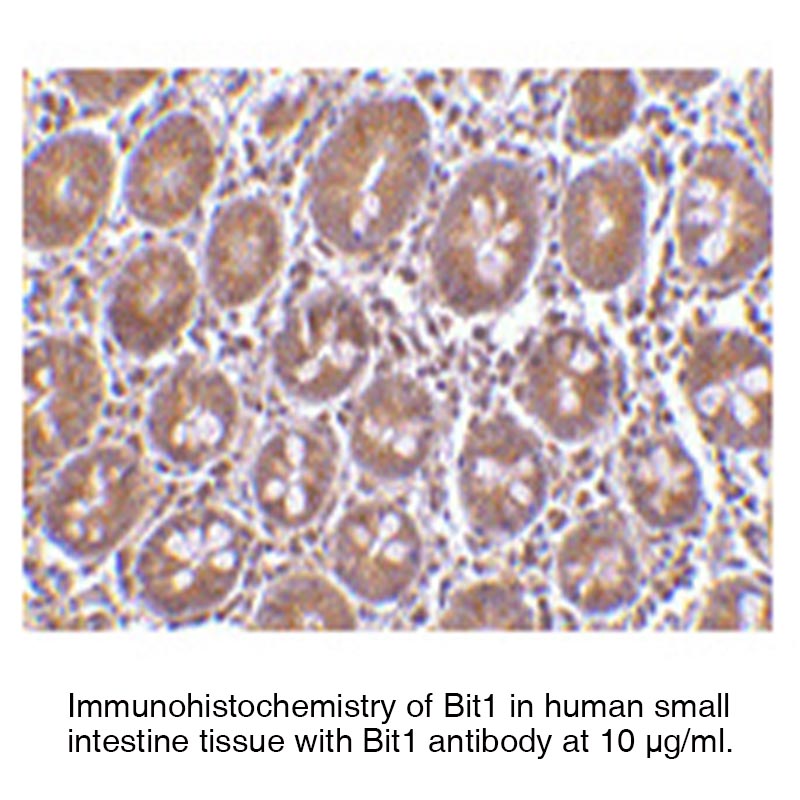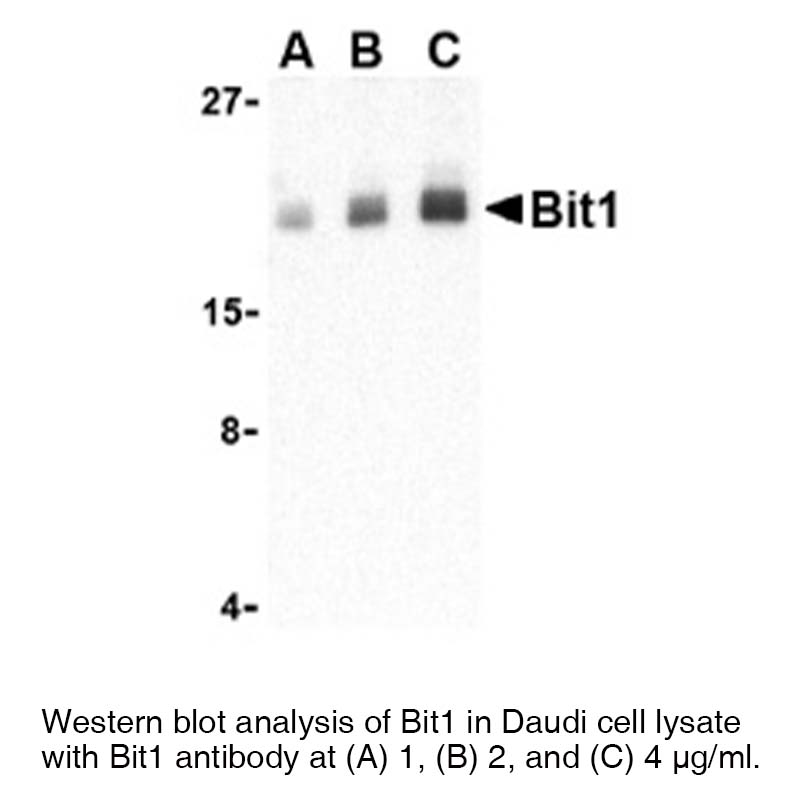搜索

Anti-Human Bit1 (Intermediate Domain),B461
0.00
0.00
商品描述
Anti-Human Bit1 (Intermediate Domain),B461,Leinco


Product Type: Polyclonal Antibody
Alternate Names: Bcl-2 inhibitor of transcription 1, Peptidyl-tRNA hydrolase 2
Applications: IHC (Paraffin), WB
|
Prod No.
|
Size
|
Price
|
Avail.
|
Qty
|
Add to cart
|
|---|---|---|---|---|---|
|
B461-0.1 mg
|
0.1 mg
|
$345.00
|
In stock
|
|
Add to Cart
|
Data


Antibody Details
Reactivity Species
Human
Host Species
Rabbit
Immunogen
PN:B492
Product Concentration
0.5 mg/ml
Formulation
This polyclonal antibody is formulated in phosphate buffered saline (PBS) pH 7.4 containing 0.02% sodium azide as a preservative.
Storage and Handling
This polyclonal antibody is stable for at least one week when stored at 2-8°C. For long term storage, aliquot in working volumes without diluting and store at –20°C in a manual defrost freezer. Avoid Repeated Freeze Thaw Cycles.
Applications and Recommended Usage ?
(Quality Tested by Leinco)
Western Blotting: Bit1 antibody can be used for the detection of Bit1 by Western blot at 1 - 4 μg/mL.
Description
Specificity
Rabbit Anti-Human Bit1 recognizes an epitope in the intermediate domain of human and mouse Bit1. This polyclonal antibody was purified using affinity chromatography.
Background
Adhesion to extracellular matrix regulates cell survival through both integrin engagement and appropriate cell spreading. Anoikis is the molecular mechanism of apop-tosis induced by integrin detachment.1 Bit1 (Bcl-2 inhibitor of transcription 1) was recently identified as being involved in this process.2 Bit1 is a mitochondrial protein that is released into the cytoplasm upon onset of apoptosis where it forms a complex with AES, a small Groucho/transducin-like enhancer of split (TLE) protein and induces caspase-independent apoptosis. Both AES and TLE proteins are transcriptional co-repressors that play important roles in neurogenesis, segmentation, and sex determination.3 It has been suggested that Bit1-AES complexes turn off a survival-promoting gene transcription program controlled by TLE.2 Interestingly, apoptosis of cells transfected with Bit1 and AES could be inhibited if the cells were allowed to attach to fibronectin through the α5β1 integrin suggesting that the Bit1-AES pathway contributing to anoikis is regulated by integrins, and in particular, the α5β1 integrin.2
Antigen Details
Protein Family
Bit1
References & Citations
1. Martin, SS. and Vuori, K. (2004) Biochim Biophys Acta. 1692:145-57.
2. Pai, JT. et al.(2004) Cell 116:751-762. 3. Chen, G. and Courey, AJ. (2000) Gene 249:1-16. Technical Protocols |



